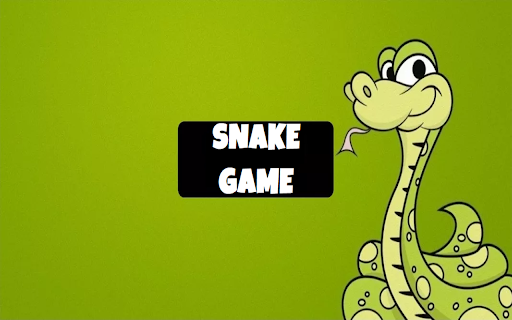Snake Game Secrets: Tips, Tricks, and Coding Adventures

The snake game has remained a timeless classic in the world of gaming. From the early mobile phone screens to modern browsers and game engines, it continues to captivate players with its simple yet addictive gameplay. Beyond being a fun pastime, the game also offers a fascinating playground for learning coding, logic, and problem-solving. Whether you’re a gaming enthusiast or an aspiring developer, understanding the secrets behind the snake game can open doors to both entertainment and education.
The Core Mechanics: Understanding the Snake
At its heart, the snake game is deceptively simple. Players control a snake that grows longer with every item it consumes while avoiding collisions with walls or itself. The thrill comes from strategic movement and timing, turning a basic grid into a dynamic challenge. Developers often use arrays or coordinate systems to manage the snake’s position, and this mechanic can teach beginners valuable lessons in data structures and logic. Mastering these fundamentals is key to creating smooth gameplay and enjoyable experiences.
Choosing the Right Platform for Coding
Before diving into coding your snake game, it’s essential to choose the right platform or programming language. JavaScript is popular for web-based games, Python is favored for beginners thanks to its readability, and game engines like Phaser.js or Unity offer advanced features. Each choice impacts how you structure your game, handle collisions, and implement animations. Selecting a platform that aligns with your goals will make your coding adventure smoother and more rewarding.
Designing the Grid: The Playground of the Snake
The grid is where all the action happens. Most snake games rely on a fixed-size grid to manage movement, collisions, and food placement. For beginners, starting with a simple 20×20 grid can provide a manageable challenge while allowing room for experimentation. Developers must ensure that the snake moves consistently within the grid, that food spawns in valid positions, and that collision detection is accurate. This seemingly simple step teaches essential coding skills in loops, conditions, and array management.
Implementing Smooth Movement
Smooth movement is crucial to making a snake game enjoyable. At first glance, moving a snake one cell at a time seems trivial, but adding realistic momentum and response to input requires careful planning. By using timers or frame-based updates, developers can control the snake’s speed and responsiveness. Players notice even the slightest lag or jitter, so optimizing movement logic is a small but critical secret to professional-quality gameplay.
Handling Collisions: Avoiding Common Pitfalls
Collisions are a make-or-break element in a snake game. Detecting when the snake hits walls or itself requires precise programming. A common trick is to track the snake’s body coordinates in a list or array, comparing the head’s new position with existing positions at each update. Efficient collision detection prevents frustrating bugs and enhances player satisfaction. For advanced coders, introducing obstacles or dynamic walls can elevate the challenge, offering players a richer gaming experience.
Growth Mechanics: Making the Snake Longer
The magic of the snake game lies in the growth mechanic. Each time the snake consumes food, it lengthens, gradually increasing the difficulty. Implementing this in code involves appending new segments to the snake’s body while maintaining movement logic. The challenge is ensuring that added segments behave naturally, maintaining smooth motion and collision integrity. This mechanic teaches developers about dynamic arrays, object manipulation, and sequencing, making the snake game both educational and entertaining.
Food Placement Strategies
Food placement is more than just random positioning. Strategic placement affects gameplay difficulty and engagement. Simple random generation can lead to inaccessible positions, so many developers use algorithms to ensure food appears in empty grid spaces. Some advanced implementations even introduce “bonus” or “special” food that offers extra points or speed boosts. Understanding these nuances enhances both the coding process and the gaming experience.
Increasing Difficulty Gradually
A well-designed snake game gradually ramps up difficulty to keep players engaged. This can be achieved by increasing snake speed, introducing obstacles, or varying food behavior. Gradual difficulty progression ensures that the game remains challenging without feeling unfair. From a coding perspective, this introduces dynamic variables, condition-based logic, and event triggers—perfect exercises for budding game developers.
Adding Power-Ups and Bonuses
Power-ups can turn a simple snake game into a more dynamic experience. From temporary invincibility to speed boosts, these elements increase player engagement and replay value. Coding these features involves timers, state management, and event-driven programming. By experimenting with bonuses, developers can explore more advanced coding techniques while keeping the classic gameplay fresh and exciting.
Enhancing Visuals and Graphics
Even simple graphics can make a snake game visually appealing. Using colors to differentiate the snake’s head, body, and food adds clarity and aesthetic appeal. Developers can experiment with gradients, animations, or pixel art to elevate the visual experience. For more advanced projects, adding background themes, particle effects, or responsive designs can make the game more immersive, blending creative design with coding skills.
Sound Effects and Music
Audio adds an often-overlooked layer of immersion. Simple sounds for eating food, colliding, or leveling up can enhance feedback and excitement. Adding background music increases engagement, but balancing volume and repetition is key. Coding audio requires integrating media libraries, managing playback, and triggering effects based on game events. These skills are transferable to any interactive project, making audio an important learning opportunity.
Implementing High Scores and Progress Tracking
High scores provide motivation and replayability. Implementing a scoring system teaches variables, conditionals, and data persistence techniques. Developers can store scores locally or use cloud databases for multiplayer challenges. Adding progress tracking, like level completion or milestones, encourages players to keep improving while giving developers experience in managing game state and user data effectively.
Mobile Optimization Considerations
If you plan to release your snake game on mobile, touch controls and responsive design are essential. Developers must ensure that swipe gestures or on-screen buttons work seamlessly while maintaining game speed and responsiveness. This introduces considerations for input handling, screen scaling, and performance optimization. Mobile optimization transforms a simple game into a polished product accessible to a wider audience.
Multiplayer and Social Features
Multiplayer modes can add a competitive edge to the classic snake game. Real-time interactions or leaderboard challenges encourage players to return. Implementing multiplayer functionality involves networking, synchronization, and latency management. These advanced coding challenges teach developers about communication protocols, client-server architecture, and event-driven updates—all valuable skills for game development careers.
Debugging Tips for Smooth Gameplay
Even simple snake games can have unexpected bugs, from collision errors to movement glitches. Keeping a systematic debugging approach is essential. Logging snake positions, monitoring frame updates, and using breakpoints can help identify and fix problems quickly. Mastering debugging in a small project like a snake game builds confidence for tackling larger, more complex applications in the future.
Creative Customizations and Mods
One of the most exciting aspects of coding a snake game is customization. Players can experiment with different snake skins, grid sizes, or themes. Developers can also add mods, such as new obstacles, special abilities, or environmental effects. These creative choices make the project unique and offer endless opportunities for learning and experimentation.
Learning Programming Through Snake Games
The snake game is more than just fun; it’s a powerful educational tool. By building your own version, you practice essential programming concepts such as loops, conditionals, arrays, object management, and event handling. It’s a hands-on way to strengthen logical thinking, problem-solving, and debugging skills. Aspiring developers often find that mastering the snake game gives them confidence to tackle more complex projects.
Sharing Your Game with the World
After coding your snake game, sharing it with friends or online communities adds a rewarding dimension. Platforms like GitHub, itch.io, or personal websites allow you to showcase your work, receive feedback, and inspire others. Engaging with a community of fellow developers or gamers can spark collaboration, lead to improvements, and motivate you to continue exploring game development.
Conclusion: Embrace the Adventure
The journey of creating and mastering a snake game is full of learning, fun, and creativity. From understanding core mechanics to implementing advanced features, each step teaches valuable skills while keeping players engaged. Whether you’re coding for personal enjoyment or aspiring to become a game developer, the snake game offers a perfect playground. Embrace the adventure, explore its secrets, and let your coding creativity flourish.



